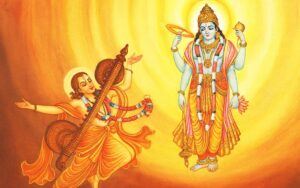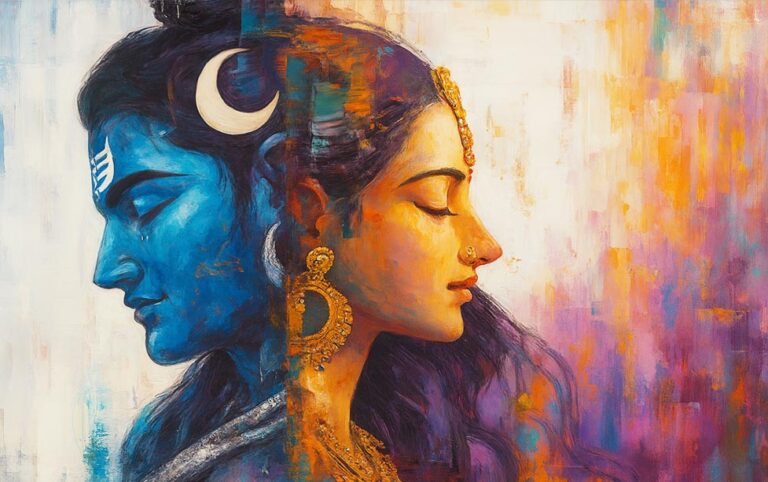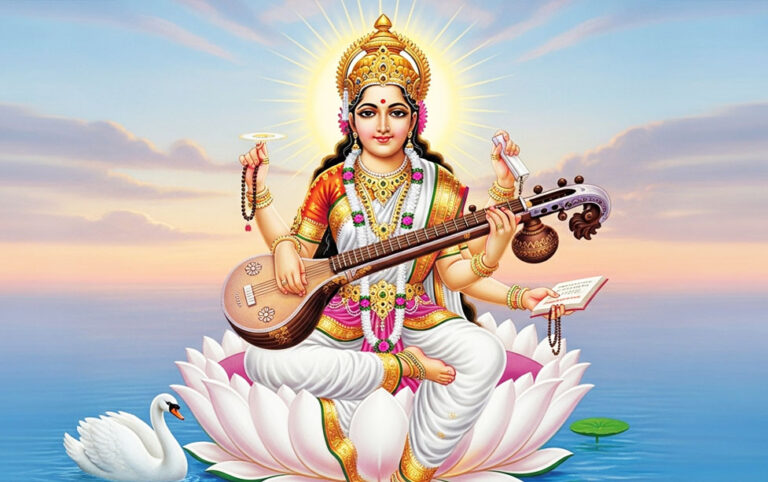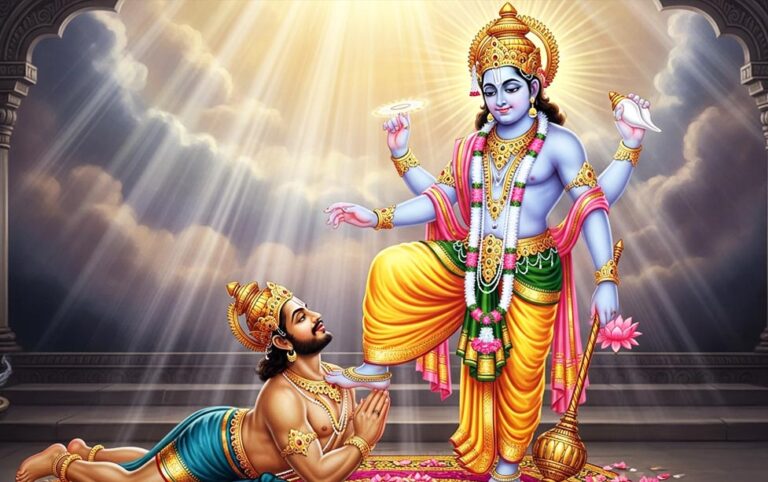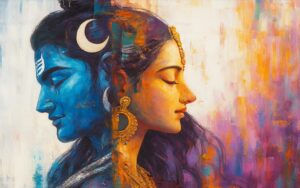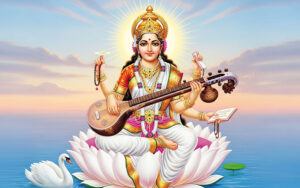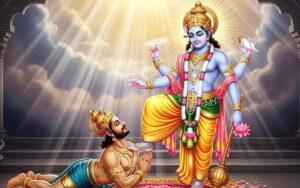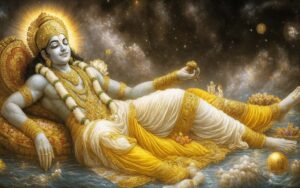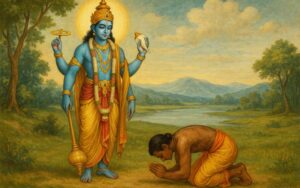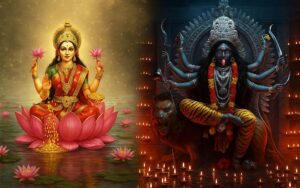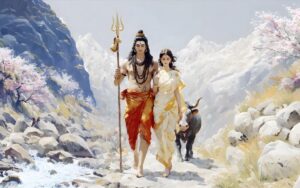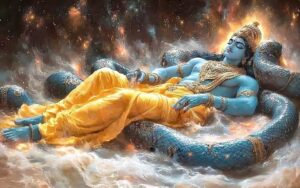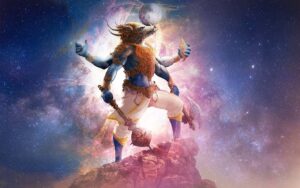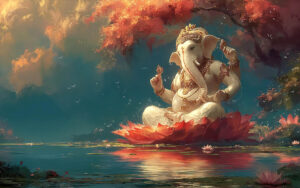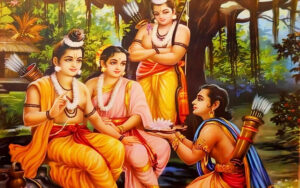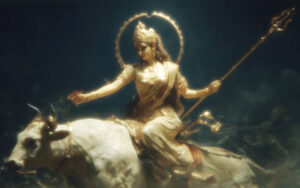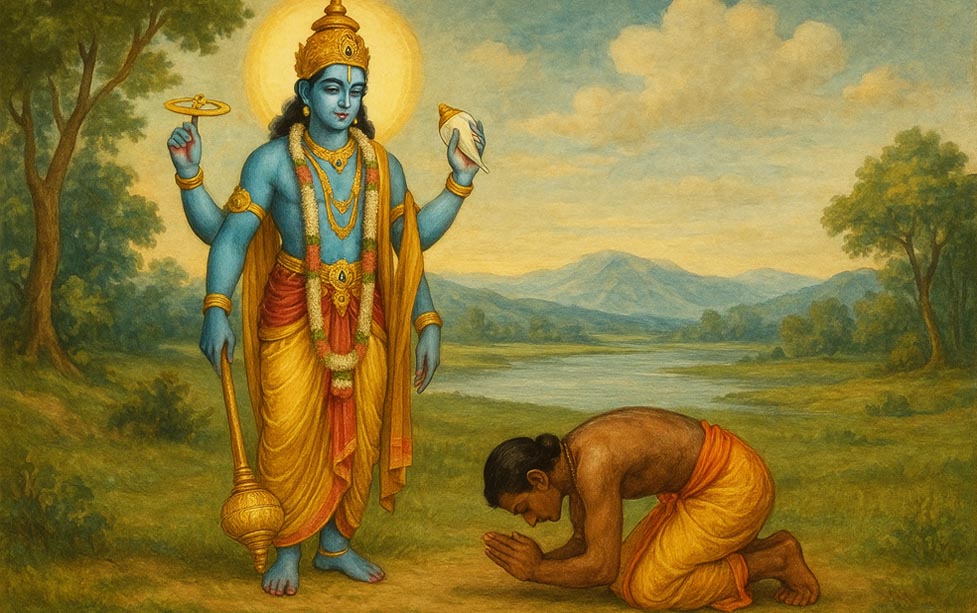
No time for reading the story? Give it a listen on Spotify.

The Vishnu Purana's tale of two birds on a single tree tells us the fundamental relationship between our busy ego and the serene, witnessing consciousness within - Nar and Narayana.
Characters in the story:
Lord Vishnu: Lord Vishnu is one of the three major deities in Hinduism, known as the preserver of the universe and the protector of dharma (righteousness). He is often depicted with four arms holding a conch shell, a discus, a mace, and a lotus flower.
Have you ever felt a constant, silent witness to your own life? A presence that observes your joys and sorrows without judgment? This profound experience is beautifully captured in one of the most elegant allegories from the Vishnu Purana—the story of two birds on a single tree.
This isn’t just a tale; it’s a map of the human soul, explaining the relationship between our busy, individual self and the eternal, divine consciousness within us, known as Lord Vishnu or Narayana.
The Tree and Its Inhabitants
Imagine a magnificent, sprawling tree. This is the Tree of Life, representing our physical body, mind, and the entire field of our worldly experiences. Its branches are our thoughts, its leaves our actions, and its roots our deep-seated desires.
On this tree live two birds. They are inseparable companions, yet their experiences are worlds apart.
The First Bird (The Jiva – The Individual Soul): This bird is named Nar—the human, the individual self. It is busy, anxious, and deeply engaged with the tree. It hops from branch to branch, tasting the fruits the tree bears. Some fruits are sweet (pleasurable experiences), and it clings to those branches. Other fruits are bitter (painful experiences), and it cries out in distress. The bird is so consumed by its feast that it forgets everything else, fully identifying itself with the tree and the fleeting taste of the fruits—its own karma.
The Second Bird (The Paramatma – The Supreme Soul): This bird is Narayana—Lord Vishnu Himself, the indwelling witness. It is serene, majestic, and radiant. It does not eat the fruits. It doesn’t hop anxiously. It simply rests on the highest branch of the tree, silently observing its companion. This bird is a metaphor for the Paramatma, the Supreme Soul that resides in the heart of every living being. It is pure consciousness, untouched by the drama of the world.
The Struggle and The Glimpse
For a long, long time, the first bird, Nar, remains entirely focused on its own struggle. It believes the fruits of the tree are the only reality. It feels alone, bound by the cycles of pleasure and pain, birth and death. It is so busy being the actor that it doesn’t notice the serene audience.
But after tasting one too many bitter fruits, a moment of exhaustion and clarity arrives. The Nar bird, in a pause between its frantic activities, happens to look up.
Its gaze meets the second bird, Narayana.
For the first time, it beholds a presence that is calm, glorious, and completely free. A profound realization begins to dawn:
“I have been struggling, while this other bird is at peace.”
“I am bound to this tree, while it is free.”
“I have been identifying with the bitter and sweet fruits, but this bird’s nature is beyond them.”
The Ultimate Realization: From Nar to Narayana
This glimpse is the beginning of spiritual awakening. The Vishnu Purana teaches that the Jiva (Nar) is not fundamentally different from the Paramatma (Narayana). They are of the same essence, just like a spark is of the same essence as the fire.
The busy bird, Nar, slowly understands the truth: “I am not just this limited body-mind complex tasting fruits. My true nature is the same as that of the glorious, silent witness. I, too, am Narayana.”
This is the ultimate goal of the allegory. It’s not that the Jiva becomes God, but rather that it realizes its inherent, eternal oneness with God. The separation was an illusion created by its own attachment to the “fruits of its actions.”
Key Takeaways for Your Spiritual Journey
This ancient story from the Vishnu Purana holds timeless wisdom:
You Are Both Birds: You are the busy Nar (the ego-mind), and you are also the serene Narayana (the pure Self). Your spiritual journey is about shifting your identity from the former to the latter.
The Silent Witness is Always Present: No matter how chaotic life gets, a part of you—the Paramatma—is always undisturbed, simply watching. Meditation and self-inquiry are practices to connect with this inner Narayana.
Freedom is a Shift in Perception: Liberation (Moksha) isn’t about flying to a new tree. It’s about the Nar bird realizing it was never truly bound to the old one. It’s about understanding that your core self is, and always was, free.
The story of the two birds is a gentle, powerful reminder that the peace and divinity you seek is not far away in a distant heaven. It is right here, within you, silently witnessing your journey, waiting for you to simply look up and recognize yourself.


